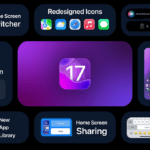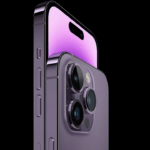Augmented Reality and Virtual Reality: Revolutionizing the Way We Interact with Technology
Introduction

In recent years, Augmented Reality (AR) and Virtual Reality (VR) have emerged as groundbreaking technologies that are reshaping the way we perceive and interact with the digital world. AR enhances our real-world surroundings by overlaying virtual elements, while VR immerses us in entirely virtual environments. With their potential to transform various industries, from gaming and entertainment to healthcare and education, AR and VR are driving innovation and pushing the boundaries of what we once believed possible. In this article, we will delve into the intricacies of AR and VR technology, exploring their applications, benefits, and the future they hold.
Augmented Reality (AR)

Augmented Reality is a technology that blends virtual content with the real world, enhancing our perception and interaction with our surroundings. It overlays digital information, such as images, videos, or 3D models, onto the physical environment using specialized devices like smartphones, tablets, or smart glasses. AR creates a seamless integration of the virtual and real worlds, enhancing our understanding, providing real-time information, and offering new forms of entertainment.
One of the most common applications of AR is in mobile gaming. Pokémon Go, a popular AR game, allows players to capture virtual creatures overlaid onto their real-world surroundings using their smartphones. This fusion of virtual characters and the physical world creates an immersive and interactive gaming experience that captivates millions of users worldwide.
AR technology also finds extensive use in retail and e-commerce. Companies have leveraged AR to offer virtual try-on experiences for fashion, allowing users to virtually try on clothes, accessories, or even makeup before making a purchase. This technology bridges the gap between online and offline shopping, boosting customer engagement and satisfaction.
Moreover, AR has made significant contributions to industries such as healthcare and education. Surgeons can use AR to superimpose medical imaging data onto a patient’s body during surgery, providing real-time guidance and enhancing precision. In the education sector, AR offers immersive learning experiences, enabling students to visualize complex concepts and interact with virtual objects, ultimately enhancing comprehension and retention.
Virtual Reality (VR)

Virtual Reality, on the other hand, offers a fully immersive experience by transporting users into virtual environments. It typically involves wearing a VR headset that displays a 3D computer-generated world and provides audio feedback, creating a sense of presence and immersion. VR technology has gained immense popularity in gaming and entertainment but has also found applications in various other fields.
In gaming, VR has revolutionized the way players experience digital worlds. By creating a sense of presence and allowing users to interact with virtual objects and environments, VR offers unparalleled immersion and realism. Players can step into the shoes of their game characters and explore virtual realms, providing an unmatched level of engagement.
Beyond gaming, VR has made significant advancements in fields like architecture and design. Architects can use VR to create immersive virtual walkthroughs of buildings, allowing clients to experience and provide feedback on designs before construction begins. This not only enhances the design process but also saves time and resources.
Medical professionals have embraced VR for training and therapy purposes. Surgeons can practice complex procedures in virtual environments, simulating real-world conditions and honing their skills before operating on actual patients. VR therapy has also shown promise in treating phobias, PTSD, and anxiety disorders by providing controlled, immersive environments for exposure therapy.
Education has also witnessed the transformative potential of VR. By creating virtual classrooms and simulations, students can explore historical events, visit remote locations, or even travel back in time, bringing their learning to life in ways that traditional textbooks cannot. VR provides an interactive and engaging platform for experiential learning, fostering creativity and critical thinking skills.
The Future of AR and VR
The future of AR and VR technology is brimming with potential. As these technologies continue to evolve, we can expect even more realistic and immersive experiences. Advancements in hardware, such as lighter and more comfortable headsets, and improved display resolutions, will drive widespread adoption and accessibility.
AR and VR will also play vital roles in remote collaboration and telepresence, enabling people to connect and interact in virtual spaces regardless of geographical boundaries. From virtual meetings to virtual social events, the possibilities for human connection and communication are vast.
Moreover, AR and VR will continue to revolutionize industries such as healthcare, education, manufacturing, and design. Medical professionals will benefit from enhanced training simulations and improved patient care. Students will have access to immersive and interactive educational experiences, expanding their learning opportunities.
In conclusion, AR and VR technologies are transforming the way we perceive and interact with the digital world. From enhancing gaming experiences and revolutionizing industries to providing immersive training and educational platforms, AR and VR have immense potential to shape our future. As these technologies evolve and become more accessible, we can anticipate a world where the virtual and real blend seamlessly, opening up new frontiers of innovation and transforming our daily lives.












